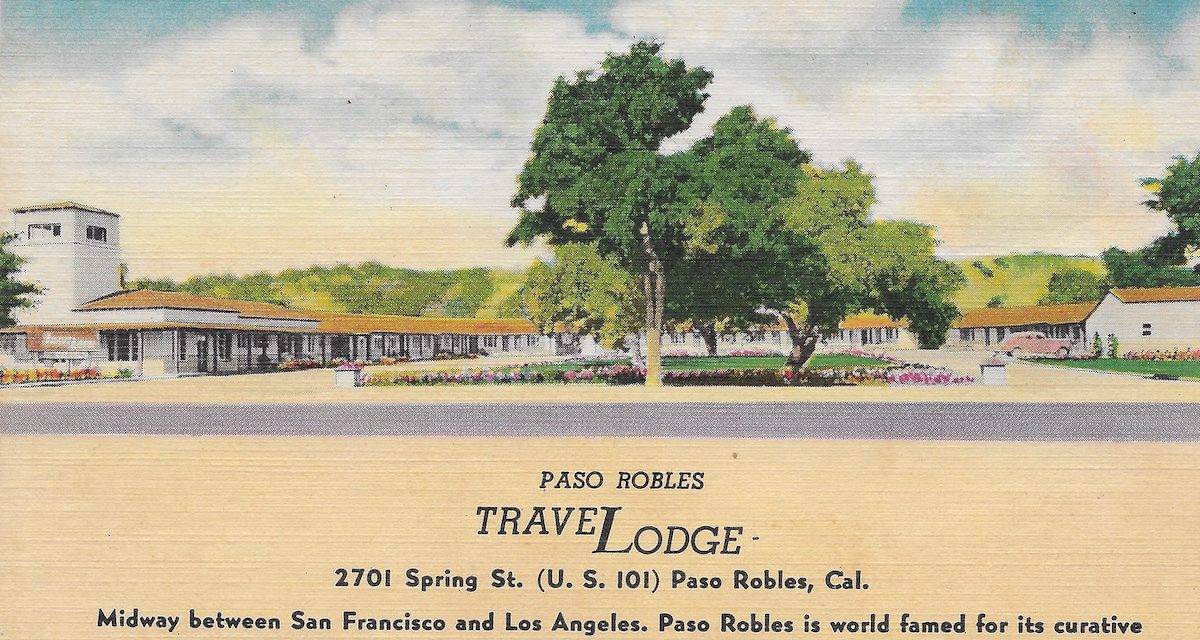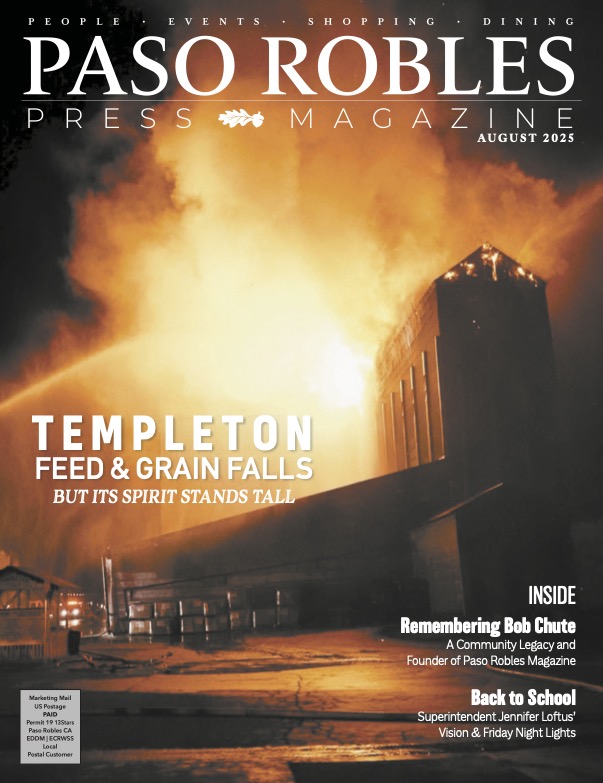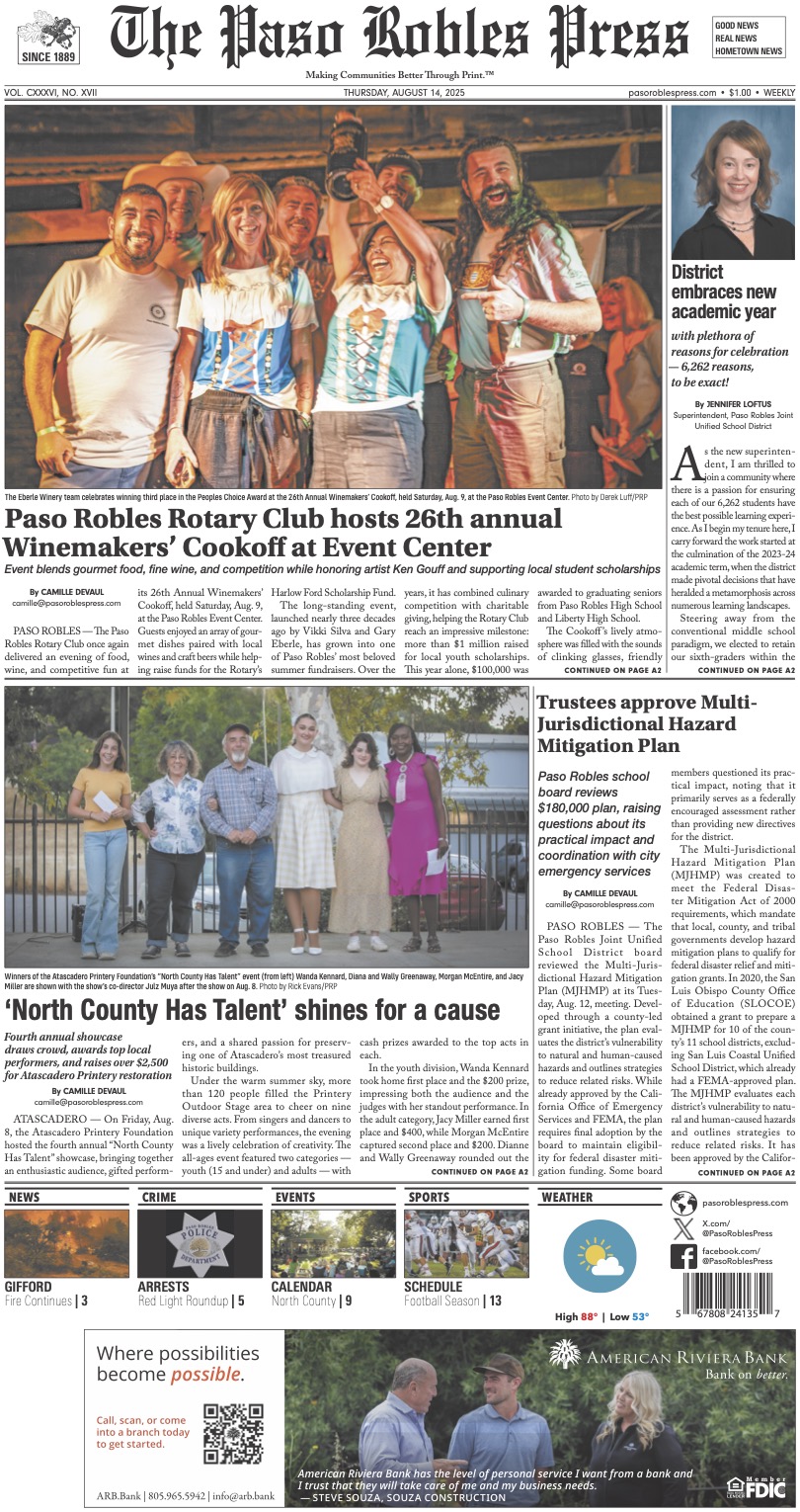Do You Remember the Roadside Motels & Motor Courts of Paso Robles?
By Camille DeVaul and the Paso Robles Area Historical Society and Museum
With the advent of the automobile, Americans took to the road in great numbers. From the beginning, the “auto tourist” sought out simple accommodations at the end of a long day of exploration. Initially, there were auto camps, which consisted of simple, rustic cabins offering few amenities except for protection from the elements.
Gradually, as roads improved and more Americans drove the highways, lodging establishments underwent a huge change. After World War II, auto tourism rose significantly in popularity. It is estimated that the number of motels in America tripled from 1940 to 1960, swelling from 20,000 to over 60,000 nationwide.
During those years, many roadside motor motels were built in Paso Robles. Most were owned and run by local families, and some had small cafes on their properties offering meals to the weary traveler. Today approximately 18 of these motels are still in existence in Paso Robles, providing a welcomed night’s lodging to the motoring tourist.
You may be surprised to learn that these motels are considered historically significant. According to smithsonian.com, “Efforts to preserve mom and pop motor lodges — particularly along Route 66, ‘the highway that’s the best’ — indicate a desire among many historians and motorists to reclaim something of the motel spirit not yet entirely lost. To understand America is to travel its highways.”
Known in historic preservation circles as “Post World War II Roadside Lodging,” these remaining motels meet several of the criteria for historic designation by the National Trust for Historic Preservation, the California State Historic Preservation Office, and the Paso Robles Historic Preservation Ordinance. Nationwide, there is a renewed interest in preserving these historic properties. Each motel was unique, but most shared a style known as Googie Architecture. It is a form of modern architecture, a subdivision of futurist architecture influenced by car culture, jets, the “Space Age, and the Atomic Age.”
Originating in Southern California during the late 1940s and continuing into the mid-1960s, Googie-themed architecture was popular among motels, coffee houses and gas stations. The style later became widely known as part of the Mid-century Modern style. The term “Googie” comes from a now-defunct cafe in West Hollywood designed by John Lautner.
These motels are reflective of a simpler time in our history when mom and pop and the kids piled into the family car and set off for an open road adventure, stopping at the end of a busy day of sightseeing to park the car in front of their motel room and take a quick dip in the pool before heading out to the local café or diner for a bite to eat. The Historical Society is grateful to the current owners of these vintage motels for their efforts to preserve and protect this unique part of Paso Robles history.
The El Paso de Robles Area Historical Society and Museum are honored to be located in the historic Carnegie Library at the center of City Park. To learn more, visit pasorobleshistorymuseum.org.
PASO ROBLES PRESS MAGAZINE
Copies of Paso Robles Press Magazine are directly delivered to 23,000 readers in zip codes 93446, 93451, and 93465 and 2,000 dropped with support from advertisers and subscribers. Together, we are Making Communities Better Through Print.™
To subscribe or advertise, click here.










